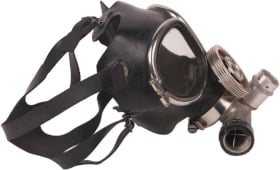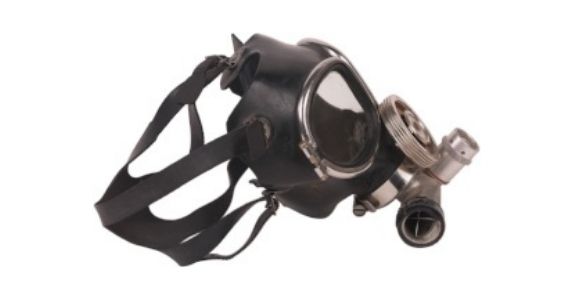Respirator Fit Tests: Quantitative vs. Qualitative
 In my last post, I discussed OSHA's Respiratory Protection standard, 29 CFR 1910.134, and what employees need to do before using a respirator. In that post, I promised a follow-up detailing the two different types of fit tests, quantitative and qualitative, which is what I am here to review today.
In my last post, I discussed OSHA's Respiratory Protection standard, 29 CFR 1910.134, and what employees need to do before using a respirator. In that post, I promised a follow-up detailing the two different types of fit tests, quantitative and qualitative, which is what I am here to review today.
As I mentioned before, as part of a company's respiratory protection program, for an individual to be able to use a respirator, he or she must be initially fit tested and annually thereafter to assure the respirator provides a tight-fitting seal. An employer ensures that a respirator will fit an employee by performing a fit test with the same make, model, and size of respirator that the employee will be using while on the job. This test checks the seal between the respirator's face piece and the employee's face, and usually takes about 15-20 minutes to complete. There are two types of fit tests that can be performed as part of the respiratory protection program: quantitative and qualitative. Below is a summary of the two types of fit tests as described by OSHA.
Quantitative Respirator Fit Tests
Quantitative fit testing can be used for any type of tight-fitting respirator and involves a machine that is used to measure the amount of leakage into the face piece. In this scenario, the respirator's face piece is attached to a probe that is connected to the machine by a hose. OSHA accepts three quantitative fit test methods:
- Generated aerosol;
- Ambient aerosol; and
- Controlled Negative Pressure.
Qualitative Respirator Fit Tests
For individuals wearing respirators that just cover their nose and mouth, or half-mask respirators, qualitative fit testing is normally used. Filtering face piece respirators, or N95s, and elastomeric respirators are considered half-mask respirators.
To detect leakage into the respirator face piece, qualitative fit tests use your sense of taste or smell, or your reaction to an irritant. This is a pass/fail method that relies on whether or not you detect leakage of the test substance into your face piece. OSHA accepts four qualitative fit test methods:
- Isoamyl acetate, which smells like bananas;
- Saccharin, which leaves a sweet taste in your mouth;
- Bitrex, which leaves a bitter taste in your mouth; and
- Irritant smoke, which can cause coughing.
If you have any questions about respirator fit tests, PPE testing, or respiratory protection plans, we encourage you to contact us or visit the following OSHA resources:










.png)